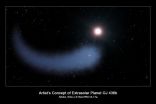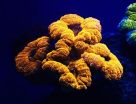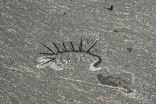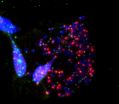(Press-News.org) Putnam Valley, N.Y. (June 24, 2015) - Cell transplantation researchers have successfully used bone marrow-derived mesenchymal stromal cells (MSCs) to treat a variety of diseases and conditions. Now, using injections of MSCs, a research team in Brazil has successfully treated laboratory rats modeled with severe burns. They found that the MSCs accelerated healing, enhanced local blood supply, affected the immune system in a positive way, secreted beneficial growth factors with anti-inflammatory properties, and ultimately provided higher survival rates than in control animals not treated with MSCs.
Their study will be published in a future issue of Cell Transplantation and is currently freely available on-line as an unedited early e-pub at:
http://ingentaconnect.com/content/cog/ct/pre-prints/content-CT-1389_Caliari-Oliveira_et_al
"Major skin burns are difficult to treat," said study co-author Dr. Maria Carolina Oliveira Rodrigues of the Department of Internal Medicine at the Ribeiro Preto Medical School in Sao Paulo, Brazil. "Besides complications associated with the wounds, such as infection, there may also be immune system and organ impairment."
The benefit of using MSCs is their ability to self-renew and differentiate into a variety of specialized cell types, such as osteoblasts (cells contributing to bone formation), chondrocytes (cartilage cells), adipocytes (fat cells), myocardiocytes (the muscle cells that make up the cardiac muscle), and neurons (nervous system cells).
MSCs have shown the ability to modulate the immune response and reduce local inflammation. They can be isolated from a variety of sources, such as adipose (fat) tissues, tendons, peripheral blood, umbilical cord blood and bone marrow. MSCs derived from bone marrow have so far been utilized the most and have been successfully transplanted in a number of disease models where they offer therapeutic benefits.
In this study, the researchers used bone marrow-derived MSCs from xenogeneic (other species) sources, in this case MSCs from mouse bone marrow for the treatment of rats, because using xenogeneic sources, said researchers, would allow for faster treatment than using the test animal's own (autologous) MSCs.
"We observed that at 30 days after treatment the MSC-treated animals presented more granulated tissue, which indicates a healing process is underway," said corresponding author Dr. Carolina Caliari-Oliveira. "After 45 days we saw that the MSC-treated group was healing faster than the control group. By 60 days, the MSC-treated group showed a larger portion of healed areas within the burn wounds (90.81 percent) than the control group (76.11 percent). We believe this result may be due to the angiogenic potential of MSCs to enhance local blood supply and thus contribute to tissue regeneration."
The researchers also noted that by day 60 only a few MSCs were detected. "We believe they were likely rejected by the xenogeneic barrier," wrote the researchers. "MSC rejection, however, may indicate that the immune system is able to control the presence of allogeneic (other donated) or xenogeneic cells."
Since their study demonstrated that xenogeneic MSCs were able to decrease mortality, modulate the immune response, and enhance wound healing, the researchers concluded that their study was "an important step toward future applications of MSCs as a regenerative therapy for patients affected by deep burns."
"Severe thermal burns can result in systemic inflammatory response syndrome (SIRS). Treatment with MSCs seems to quell the immune response to the wounds. In addition, MSCs may also ameliorate the negative effects and expedite healing through secretion of factors that contribute to angiogenesis and lessen skin fibrosis and scar formation. The exact mechanisms behind more rapid and effective healing after MSC treatment needs to be further explored, as does the benefit of using xenogeneic rather than autologous cells." says Dr. Paul Sanberg, Senior Vice President of Research and Innovation at the University of South Florida. "A promising clinical trial is being conducted (ClinicalTrials.gov Identifier NCT02104713) at the University of Miami using allogeneic MSCs to treat 2nd degree burns. Perhaps further studies can help elucidate the effectiveness of such treatment."
INFORMATION:
Contact: Dr. Carolina Caliari-Oliveira, Hemotherapy Center of Ribeirão Preto
Rua Tenente Catão Roxo, 2501 CEP 14051-140 Ribeirão Preto-SP-Brazil
Email: caliari.carolina@gmail.com
Ph: +55 16 21019300
Fax: + 55 16 2101 9309
Citation: Caliari-Oliveira, C.; Yaochite, J. N. U.; Ramalho, L. N. Z.; Palma, P. V. B.; Cunha, F. d.-Q.; De Souza, D. A.; Frade, M. A. C.; Covas, D. T.; Malmegrim, K. C. R.; Rodrigues, M. C. O.; Voltarelli, J. C. Xenogeneic Mesenchymal Stromal Cells Improve Wound Healing and Modulate the Immune Response in an Extensive Burn Model. Cell Transplant. Appeared or available on-line: May 7, 2015
The Coeditors-in-chief for CELL TRANSPLANTATION are at the Diabetes Research Institute, University of Miami Miller School of Medicine and Center for Neuropsychiatry, China Medical University Hospital, TaiChung, Taiwan. Contact, Camillo Ricordi, MD at ricordi@miami.edu or Shinn-Zong Lin, MD, PhD at shinnzong@yahoo.com.tw or David Eve, PhD or Samantha Portis, MS, at celltransplantation@gmail.com
Urinary tract and sexually transmitted infections in women are misdiagnosed by emergency departments nearly half the time, according to a paper in the Journal of Clinical Microbiology, a publication of the American Society for Microbiology. These misdiagnoses result in overuse of antibiotics, and increased antibiotic resistance, according to Michelle Hecker, MD, an assistant professor in the Department of Medicine, Division of Infectious Diseases, MetroHealth Medical Center, Case Western Reserve University, Cleveland, and her collaborators.
"Less than half the women ...
Astronomers using NASA's Hubble Space Telescope have discovered an immense cloud of hydrogen dubbed "The Behemoth" bleeding from a planet orbiting a nearby star. The enormous, comet-like feature is about 50 times the size of the parent star. The hydrogen is evaporating from a warm, Neptune-sized planet, due to extreme radiation from the star.
This phenomenon has never been seen around an exoplanet so small. It may offer clues to how other planets with hydrogen-enveloped atmospheres could have their outer layers evaporated by their parent star, leaving behind solid, rocky ...
Cystic fibrosis is more deadly for Hispanic than non-Hispanic patients, a disparity that is not explained by differences in their access to health care, according to a new study from the Stanford University School of Medicine.
The study, published online June 18 in Chest, tracked more than 1,700 California residents with cystic fibrosis. Between 1991 and 2010, Hispanic CF patients were almost three times as likely to die as non-Hispanic CF patients, the study found. The gap in survival existed in spite of the fact that both groups visited CF specialty clinics equally ...
Glowing corals that display a surprising array of colours have been discovered in the deep water reefs of the Red Sea by scientists from the University of Southampton, UK, Tel Aviv University and the Interuniversity Institute for Marine Sciences (IUI), Israel, together with an international team of researchers.
The researchers, whose findings have been published online today in research journal PLOS ONE, hope that some of the coral pigments could be developed into new imaging tools for medical applications.
The team studied corals at depths of more than 50 metres and ...
Vitamin B12 tweaks how genes behave in the facial bacteria of some people who normally enjoy clear skin. The activity changes of the facial bacteria promote inflammation and lead to pimples.
By shedding light on one mechanism behind B12's role in acne, the UCLA finding may identify drug targets that lead to new treatments for acne.
Huiying Li, an assistant professor of molecular and medical pharmacology at the David Geffen School of Medicine at UCLA, and Dr. Noah Craft, a dermatologist at LA BioMed at Harbor-UCLA Medical Center, are available for interviews.
Science ...
On the hunt for better cancer screening tests, Johns Hopkins scientists led a proof of principle study that successfully identified tumor DNA shed into the blood and saliva of 93 patients with head and neck cancer. A report on the findings is published in the June 24 issue of Science Translational Medicine.
"We have shown that tumor DNA in the blood or saliva can successfully be measured for these cancers," says Nishant Agrawal, M.D., associate professor of otolaryngology -- head and neck surgery -- and of oncology at the Johns Hopkins University School of Medicine. "In ...
Various diagnostic imaging techniques are currently used for clinical imaging/disease diagnosis. The accuracy of diagnosis is mainly based on the type of energy used (such as X-ray, sound waves, photons and positrons) to derive the visual information, as well as the degree of spatial resolution (mesoscopic or microscopic) and the level of information that can be obtained (physiological, anatomical or molecular). Based on potential health hazards imposed by type of energy used, clinical imaging modalities can be broadly categorized as ionizing and non-ionizing modalities. ...
From AGU's blogs: Landslide-induced sediment production after the Sabah earthquake in Malaysia
The Mw=6.0 5 June 2015 Sabah earthquake in Malaysia, which killed 18 people in rockfalls on Mount Kinabalu, generated landslides that have released large volumes of sediment. The heavy tropical rainfall in Sabah means that this sediment is now starting to enter the river systems in the form of mudflows and sediment-rich flash floods. Dave Petley explores the aftermath of the Sabah earthquake in a new post on The Landslide Blog.
From Eos.org: Improving predictions of Arctic ...
A new study of an otherworldly creature from half a billion years ago - a worm-like animal with legs, spikes and a head difficult to distinguish from its tail - has definitively identified its head for the first time, and revealed a previously unknown ring of teeth and a pair of simple eyes. The results, published today in the journal Nature, have helped scientists reconstruct what the common ancestor of everything from tiny roundworms to huge lobsters might have looked like.
Researchers from the University of Cambridge, the Royal Ontario Museum and the University of ...
LA JOLLA--Telomeres, specialized ends of our chromosomes that dictate how long cells can continue to duplicate themselves, have long been studied for their links to the aging process and cancer. Now, a discovery at the Salk Institute shows that telomeres may be more central than previously thought to a self-destruct program in cells that prevents tumors, a function that could potentially be exploited to improve cancer therapies.
When cells replicate in a process called mitosis, their telomeres get a little shorter each time. Eventually, after many cell divisions, telomeres ...



